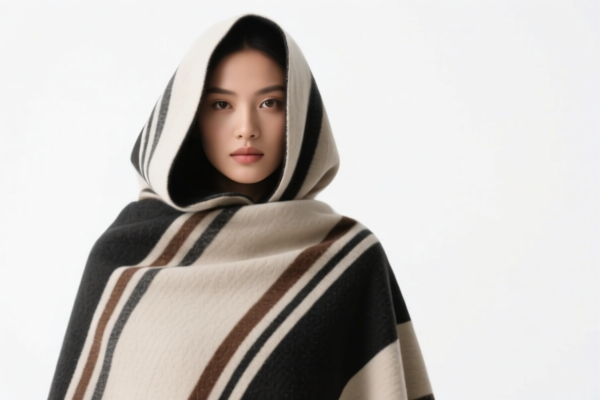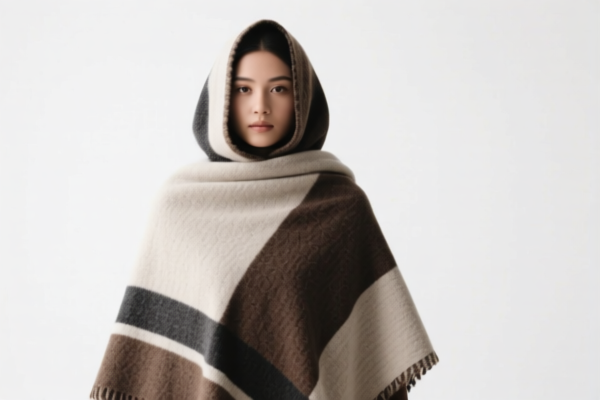| HS Code | Official Doc | Tariff Rate | Origin | Destination | Effective Date |
|---|---|---|---|---|---|
| 6102100000 | Doc | 55.9¢/kg + 16.4%+37.5% | CN | US | 2025-05-12 |
| 6117101000 | Doc | 47.1% | CN | US | 2025-05-12 |
| 6102200020 | Doc | 53.4% | CN | US | 2025-05-12 |
| 6210209020 | Doc | 43.7% | CN | US | 2025-05-12 |
| 6102909005 | Doc | 43.2% | CN | US | 2025-05-12 |




- Producto declarado: Poncho
- Código arancelario HS: 6102100000, 6117101000, 6102200020, 6210209020, 6102909005
- Clasificación: Ropa de abrigo, como capas, capas, capas, etc., hechas de lana o pelo de animales finos, o de algodón, o de otros materiales, según el código HS.
✅ Tarifas arancelarias detalladas (en español):
- Código HS: 6102100000
- Descripción: Chaquetas, abrigos, capas, capas, etc., de lana o pelo de animales finos, tejidos o tejidos a crochet, para mujeres o niñas.
- Tarifa base: 55.9¢/kg + 16.4%
- Tarifa adicional: 7.5%
- Tarifa especial después del 2 de abril de 2025: 30.0%
-
Total: 55.9¢/kg + 16.4% + 7.5% + 30.0% = 55.9¢/kg + 53.9%
-
Código HS: 6117101000
- Descripción: Accesorios de ropa tejidos o tejidos a crochet, como capas, capas, etc., de lana o pelo de animales finos.
- Tarifa base: 9.6%
- Tarifa adicional: 7.5%
- Tarifa especial después del 2 de abril de 2025: 30.0%
-
Total: 9.6% + 7.5% + 30.0% = 47.1%
-
Código HS: 6102200020
- Descripción: Chaquetas, abrigos, capas, capas, etc., tejidas o tejidas a crochet, de algodón, para mujeres.
- Tarifa base: 15.9%
- Tarifa adicional: 7.5%
- Tarifa especial después del 2 de abril de 2025: 30.0%
-
Total: 15.9% + 7.5% + 30.0% = 53.4%
-
Código HS: 6210209020
- Descripción: Otros tipos de ropa, como abrigos, chaquetas, capas, capas, etc.
- Tarifa base: 6.2%
- Tarifa adicional: 7.5%
- Tarifa especial después del 2 de abril de 2025: 30.0%
-
Total: 6.2% + 7.5% + 30.0% = 43.7%
-
Código HS: 6102909005
- Descripción: Chaquetas, abrigos, capas, capas, etc., tejidas o tejidas a crochet, para mujeres o niñas.
- Tarifa base: 5.7%
- Tarifa adicional: 7.5%
- Tarifa especial después del 2 de abril de 2025: 30.0%
- Total: 5.7% + 7.5% + 30.0% = 43.2%
⚠️ Alertas importantes:
-
Tarifas adicionales después del 2 de abril de 2025:
A partir de esa fecha, se aplicará un 30.0% adicional a la tarifa base, independientemente del material o país de origen. -
Tarifas anti-dumping:
No se mencionan tarifas anti-dumping específicas para este producto, pero se recomienda verificar si aplica según el material y el país de origen.
📌 Recomendaciones clave:
- Verificar el material exacto: Asegúrate de que el poncho esté hecho de lana, pelo de animales finos, algodón u otros materiales, ya que esto afecta el código HS correcto.
- Verificar el peso unitario: Las tarifas en céntimos por kilogramo (¢/kg) requieren un cálculo basado en el peso del producto.
- Certificaciones necesarias: Algunos países pueden requerir certificados de origen o certificados de cumplimiento arancelario.
- Verificar el país de origen: Las tarifas pueden variar según el país de exportación, especialmente si se aplican acuerdos comerciales o preferencias arancelarias.
¿Necesitas ayuda para determinar el código HS más adecuado según el material o el país de origen?
- Producto declarado: Poncho
- Código arancelario HS: 6102100000, 6117101000, 6102200020, 6210209020, 6102909005
- Clasificación: Ropa de abrigo, como capas, capas, capas, etc., hechas de lana o pelo de animales finos, o de algodón, o de otros materiales, según el código HS.
✅ Tarifas arancelarias detalladas (en español):
- Código HS: 6102100000
- Descripción: Chaquetas, abrigos, capas, capas, etc., de lana o pelo de animales finos, tejidos o tejidos a crochet, para mujeres o niñas.
- Tarifa base: 55.9¢/kg + 16.4%
- Tarifa adicional: 7.5%
- Tarifa especial después del 2 de abril de 2025: 30.0%
-
Total: 55.9¢/kg + 16.4% + 7.5% + 30.0% = 55.9¢/kg + 53.9%
-
Código HS: 6117101000
- Descripción: Accesorios de ropa tejidos o tejidos a crochet, como capas, capas, etc., de lana o pelo de animales finos.
- Tarifa base: 9.6%
- Tarifa adicional: 7.5%
- Tarifa especial después del 2 de abril de 2025: 30.0%
-
Total: 9.6% + 7.5% + 30.0% = 47.1%
-
Código HS: 6102200020
- Descripción: Chaquetas, abrigos, capas, capas, etc., tejidas o tejidas a crochet, de algodón, para mujeres.
- Tarifa base: 15.9%
- Tarifa adicional: 7.5%
- Tarifa especial después del 2 de abril de 2025: 30.0%
-
Total: 15.9% + 7.5% + 30.0% = 53.4%
-
Código HS: 6210209020
- Descripción: Otros tipos de ropa, como abrigos, chaquetas, capas, capas, etc.
- Tarifa base: 6.2%
- Tarifa adicional: 7.5%
- Tarifa especial después del 2 de abril de 2025: 30.0%
-
Total: 6.2% + 7.5% + 30.0% = 43.7%
-
Código HS: 6102909005
- Descripción: Chaquetas, abrigos, capas, capas, etc., tejidas o tejidas a crochet, para mujeres o niñas.
- Tarifa base: 5.7%
- Tarifa adicional: 7.5%
- Tarifa especial después del 2 de abril de 2025: 30.0%
- Total: 5.7% + 7.5% + 30.0% = 43.2%
⚠️ Alertas importantes:
-
Tarifas adicionales después del 2 de abril de 2025:
A partir de esa fecha, se aplicará un 30.0% adicional a la tarifa base, independientemente del material o país de origen. -
Tarifas anti-dumping:
No se mencionan tarifas anti-dumping específicas para este producto, pero se recomienda verificar si aplica según el material y el país de origen.
📌 Recomendaciones clave:
- Verificar el material exacto: Asegúrate de que el poncho esté hecho de lana, pelo de animales finos, algodón u otros materiales, ya que esto afecta el código HS correcto.
- Verificar el peso unitario: Las tarifas en céntimos por kilogramo (¢/kg) requieren un cálculo basado en el peso del producto.
- Certificaciones necesarias: Algunos países pueden requerir certificados de origen o certificados de cumplimiento arancelario.
- Verificar el país de origen: Las tarifas pueden variar según el país de exportación, especialmente si se aplican acuerdos comerciales o preferencias arancelarias.
¿Necesitas ayuda para determinar el código HS más adecuado según el material o el país de origen?
Customer Reviews
No reviews yet.